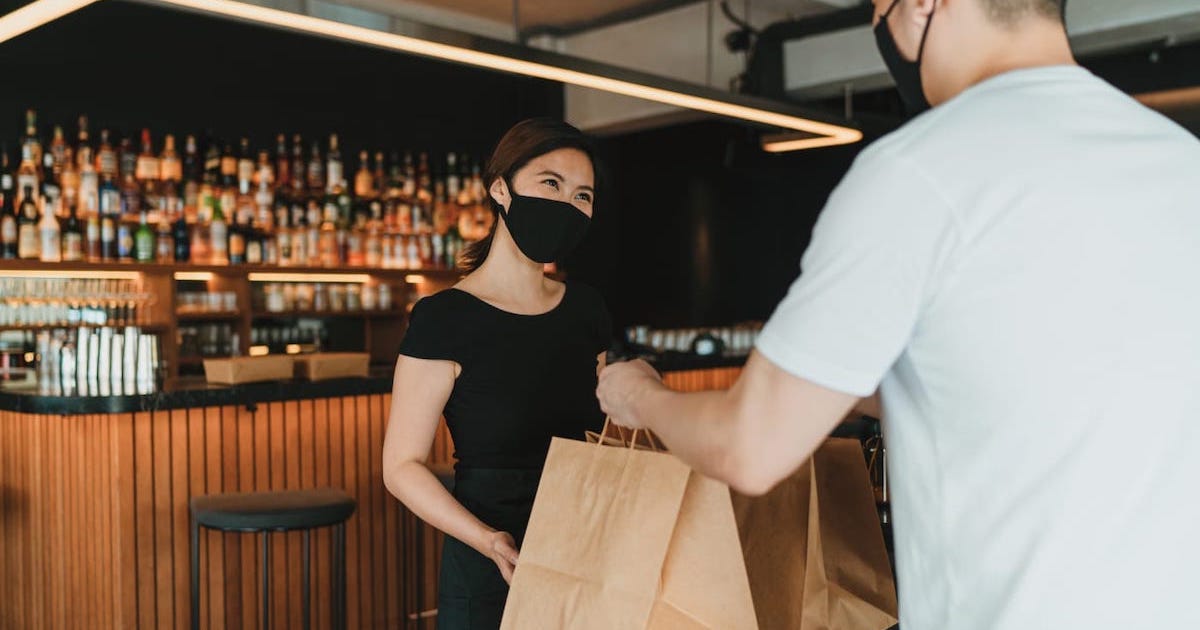It seems that negative feedback on food delivery companies are rife online.
A quick glance at food delivery platforms’ Facebook pages will reveal angry emojis and a slew of comments from users complaining about late, cold, and missing food; and it seems that these complaints have surged in recent months.
Wilron Loh said he had ordered noodles from hawker delivery platform WhyQ last week. He waited an hour for it, but his order eventually was not delivered. He called the experience the “worst delivery ever”.
Meanwhile, foodpanda user Brandon S said his payment was rejected when he ordered his food, so he had to resort to buying his lunch elsewhere. Alas, his card was charged and he ended up paying for two lunches that day.
Food delivery giant GrabFood isn’t spared from the heat too.
Disgruntled user Irvin Ng said he’s “utterly disappointed” with GrabFood after his points were converted to a voucher after a cancelled food order. He was dismayed as he couldn’t use the points to buy food from other merchants.
Another GrabFood user Kylie L said her missing orders took more than two hours to be investigated.

The Phase 2 Heightened Alert that has just ended has once again exposed the infrastructure problems of the food delivery industry.
Last year during circuit breaker, food demand spikes and orders were also not delivered on time. The firms and experts had then attributed those problems to a relatively new industry and the sudden onset of Covid-19, a period when food delivery companies did not have enough time to adjust quickly.
However, it has already been more than a year since Covid-19 happened. Even with time on their side, delivery problems still persist.
Why are there frequent complaints?
“(Customer service) is not important until (the tech firms) have a service issue, and then it becomes the deciding factor in whether a customer might decide to blow up the issue on social media,” says Walter Theseira, associate professor and startups expert at the Singapore University of Social Sciences (SUSS).
He added that the reason why the internet is rampant with complaints on poor food delivery services is due to the industry being cheap to enter, but expensive to maintain quality service.
It’s also costly to build an efficient infrastructure due to high operating and growth costs.
So it is about funds, but it is not just customer service in the sense of hiring people to take complaints, it’s also about investing in operations.
It’s pretty cheap to set up a website, find some people to start delivering food and sign up some F&B partners. The high operating cost is that to do this well, particularly once you expand beyond a narrow niche or geographic area, it gets very expensive.
– Professor Walter Theseira of SUSS
Also, the food delivery model which usually hires “on-demand riders” makes it easier for standards to go awry.

“If you rely solely on on-demand delivery team, who are paid only when they have an order to execute, you will really run into problems when you have unexpected (or even expected) surges in demand,” explained Mr Theseira.
To improve on their capabilities and cut down on bad feedback, Dr Clive Choo, lecturer at Nanyang Technological University’s (NTU) business school says food delivery firms should invest in good software programmers and marketers.
“This will help them to continuously improve their routing algorithm. Marketers might need to study needs of a certain vicinity and collaborate with the food caterers accordingly,” he adds.
Why are prices going up despite intense competition?
Food delivery customers Vulcan Post spoke to say that prices of food and delivery have been going up on some platforms.

When the media outlet attempted to order two cups of bubble tea from renowned brands from White Sands Mall to a Pasir Ris HDB block that’s 1.4km away, a check on various food delivery platforms reveals inconsistent delivery rates.
On one app, it costs S$4 to S$6 just to deliver the drinks. That’s equivalent to the price of an additional cup of bubble tea. On two other apps, the delivery charges range from S$1.90 to S$2.50.
The experts attribute the higher delivery fees to the demand and supply of riders of each platform. The work-from-home situation also means there’s more food delivery demand at the heartlands.
One expert says the higher fees may also be to reflect better numbers to support firms’ listing plans.
“The food delivery apps are under increasing pressure to improve margins, especially since several are now public corporations or intend to go public soon,” says Mr Theseira.
As for the higher food prices, Dr Choo says it could be that the food providers are squeezed in their profit by food delivery companies. “Another way of looking at this is that food delivery companies are not willing to take up this cost,” he suggests.
The Singapore government had provided a short-term relief for F&B eateries for Phase 2 HA, funding five percentage points of commission costs charged by Deliveroo, foodpanda, and GrabFood.
The usual commission charge is 30 per cent of the total food order.
Experts say that as more get vaccinated and the nation recovers from Covid-19, the delivery firms may have to consider adjusting their commission rates to retain both customers and food providers.
“There is substantial evidence that logistics businesses — which is part of what food delivery offers — have substantial economies of scale… I expect the market will tend towards a small number of large players, with possibly niche platforms with a particular specialty also co-existing,” says Mr Theseira.
Be cautious where you park your money
Covid-19 has led to new food delivery firms sprouting up.
In March, AirAsia launched its food delivery service in Singapore, dangling free delivery promotions to attract customers.

At that time, the group said it had more than 500 riders and about 300 food operators. It also claims to offer lesser commission fees compared to competitors.
A search on Facebook also revealed smaller food delivery providers like deliver.sg, SG Food Delivery, and Bao Jiak delivery.
As much as these newcomers provide alternatives and variety, experts say consumers and merchants should be more careful with less established providers in this space, especially if the business model of the company is to act as an intermediary and hold cash during the transaction.
“You really need to assess the credibility of the platform or merchant. It is extremely difficult to recover small losses or refunds if services are not provided, unless the platform voluntarily offers such a refund,” says Mr Theseira.
It might take a much longer time to break even for new startups too, unless there are continual funds to achieve economies of scale to support its operations and app development like efficient routing algorithm and last-mile delivery routes, says Dr Choo.
He adds that customers’ ‘stored value’ or prepaid amounts could be forfeited when the food delivery company folds up.
I don’t advise consumers to go to food delivery companies that use subscription or prepaid business models. (You) should pay as you use them.
– Dr Clive Choo of NTU business school
If payments are made by credit card, there’s some possibility of cancelling the charge, but other types of payments are probably not recoverable at reasonable cost in the event of business failure or non-fulfillment, the experts add.
“I don’t think most startups enter the industry intending to cheat customers, and offering services at a loss is a well-established method of gaining market share on entry. The fact is that this industry is cheap to enter but expensive to master, and not all startups will be in a position to sustain their business or provide adequate services,” Mr Theseira says.
Longer-term concerns on the food delivery industry
Despite the many structural growth issues, food delivery services are set to stay, the experts note.
In a survey conducted in January this year, 80 per cent of respondents admitted that they are ordering from food delivery services more than ever before, with half saying that they order in food more than once a week.
Older Singaporeans are also adopting food delivery platforms. 81 per cent of respondents aged 45 to 54 state that they are more reliant on food delivery services to order their meals.

With more wanting their food delivered to their doorstep, the onus is on the platforms to improve their services.
Mr Theseira suggests food delivery firms look at the cost model in hiring riders to ensure quality deliveries.
“I would say food delivery services would like to have as much control over riders as possible, so they can provide predictable service, but they don’t want to pay for the costs of making riders employees.”
“Delivery staff are incentivised to complete deliveries as fast as possible, which means some risk of being reckless,” Mr Theseira says.
As for the labour market issues around the gig economy as a whole, Mr Theseira notes that any increased regulation and labour market protections would likely drive up costs significantly.
For public health, he says that there hasn’t been a major issue since the short time window between food preparation and delivery really doesn’t introduce much risk, and food is usually sealed by the restaurant.
Nonetheless, the platforms must hold high food hygiene standards, or perhaps introduce food safety courses to help workers better understand the requirements. Or be prepared to face bad press, if anything unfortunate happens.
“It’s always a concern that mishandling and so on could introduce food safety risks,” he says.
VP Label puts together all the best local products for you to discover in one place. Join us in supporting homegrown Singaporean brands:
Featured Image Credit: Getty Images








